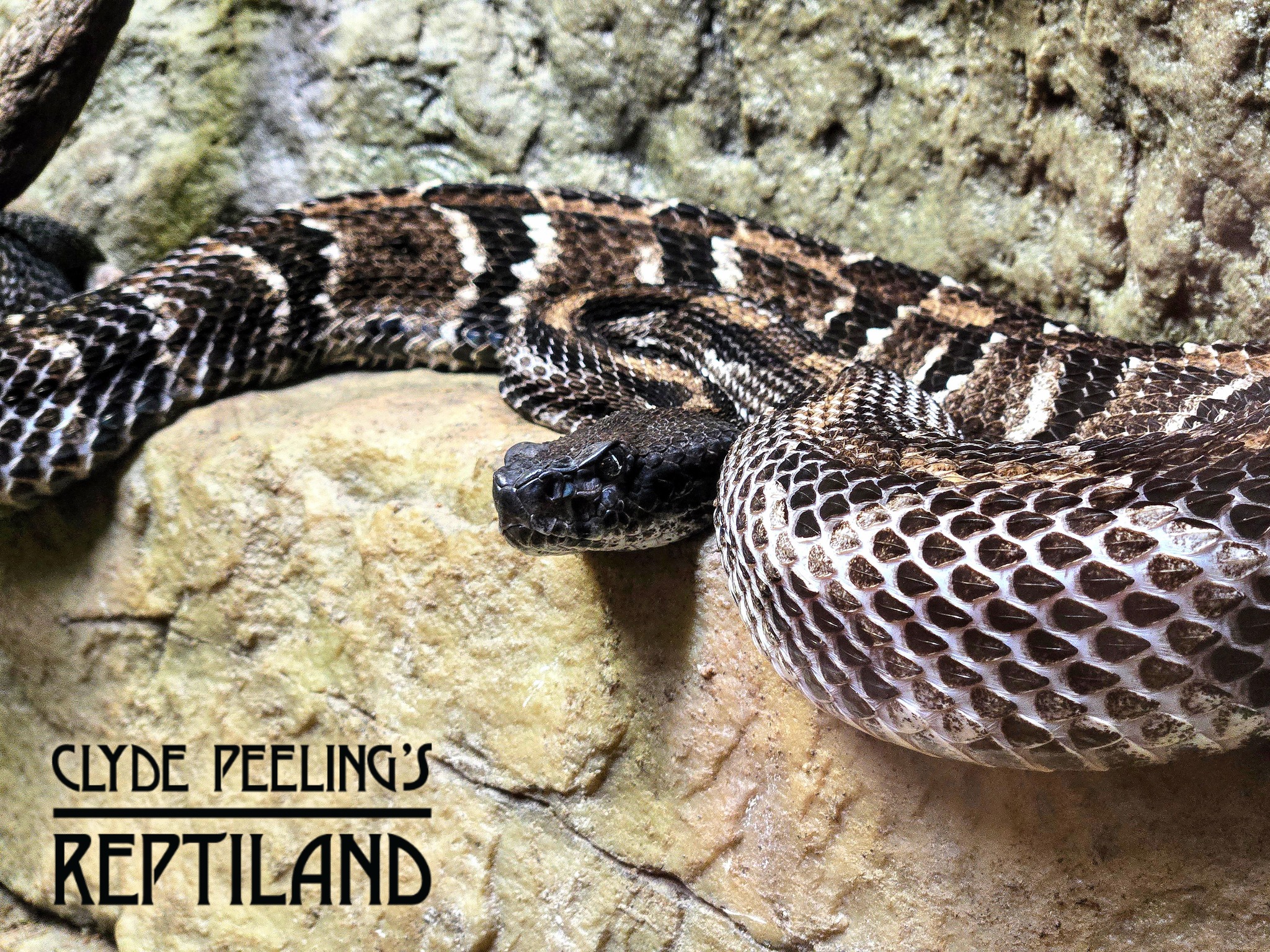-
Habitat and Distribution: Explore where timber rattlesnakes are commonly found, focusing on their preferred environments and geographical range.
-
Physical Characteristics and Behavior: Examine their physical traits, such as size and color variations, and discuss their behavioral tendencies.
-
Ecological Role and Prey: Understand the ecological significance of timber rattlesnakes and the types of prey they hunt.
-
Venom and Safety: Provide insights on the nature of their venom, its potential danger to humans, and appropriate safety measures.
- Conservation Status and Challenges: Highlight the conservation efforts and challenges faced in protecting timber rattlesnake populations.
Timber rattlesnakes, members of the Crotalinae family, are notable inhabitants of the eastern United States. These impressive reptiles favor the rich, biodiverse environments of low mountain ridges and upland forests. Ensconced in these ecosystems, they often bask in the sun on rocky slopes during transitional periods in spring and fall. Their habitat choices speak to their preference for temperate environments rich with potential prey. Typically ranging from 2 ½ to 5 feet in length, timber rattlesnakes showcase a fascinating array of color variations. Their patterns often consist of dark bands of brown or black stretching over a canvas of bright yellow to deep black. This striking appearance not only allows them to blend seamlessly with their surroundings but also serves as an intimidating visual deterrent to potential threats.
Despite their formidable appearance, timber rattlesnakes are known for their mild temperament. They are generally reticent to strike, relying instead on their camouflage and the infamous warning rattle, composed of dried scales at the tip of the tail, to ward off those who may come too close. This behavior epitomizes their preference for peaceful coexistence within their ecosystems. However, while these snakes possess a reputation for passivity, they should always be observed from a considerate distance.
The ecological contributions of timber rattlesnakes are significant. As apex predators in their habitats, they play a crucial role in regulating the populations of their prey, which primarily includes small mammals such as rodents. This predation helps maintain ecological balance, preventing rodent populations from overwhelming and degrading their environment. Furthermore, through their interactions within the food web, they help sustain the biodiversity necessary for healthy ecosystems. Understanding their feeding habits provides valuable insight into the complex interdependencies inherent to these natural systems.
The venom of timber rattlesnakes is a subject of both fascination and caution. Combining proteins and enzymes, their venom serves primarily to subdue prey and initiate digestion. In humans, a bite can cause severe symptoms requiring immediate medical attention. However, encounters resulting in bites are rare thanks to the rattlesnake’s aversive behavior toward humans. Educating the public on methods to coexist with these animals safely is vital, emphasizing respect and caution in shared habitats. This includes understanding the signs of their presence and the appropriate response if one is encountered.
Conservation of the timber rattlesnake represents an essential but challenging task. They have faced significant threats from habitat loss due in part to human development and land conversion. Additionally, road mortality and deliberate persecution by humans further pressure their populations. Efforts to conserve timber rattlesnakes include land protection initiatives, public education campaigns, and legal protections that label them as a species of special concern in several states. These initiatives aim to ensure future generations can continue to learn from and appreciate these remarkable reptiles.
While the timber rattlesnake may evoke trepidation, it is an integral component of its ecosystem with much to contribute to biodiversity. By fostering understanding and respect, coexistence with these venerable reptiles is not only possible but beneficial to preserving our natural world. As we advance conservation strategies, the continued support and engagement of communities will be pivotal in safeguarding the timber rattlesnake and its habitats for the future.
*****
Source Description
Meet the Timber Rattlesnake! 🌲🐍
The timber rattlesnake is a venomous pit viper found in the eastern United States. These snakes prefer low mountain ridges and upland woods, often basking on rocky slopes during spring and fall. They are typically 2 ½ to 5 feet in length. Their colors vary greatly but commonly consist of brown or black bands over bright yellow to black colorization.
While mild-mannered and reluctant to strike, these snakes should be observed and appreciated from a safe distance.


